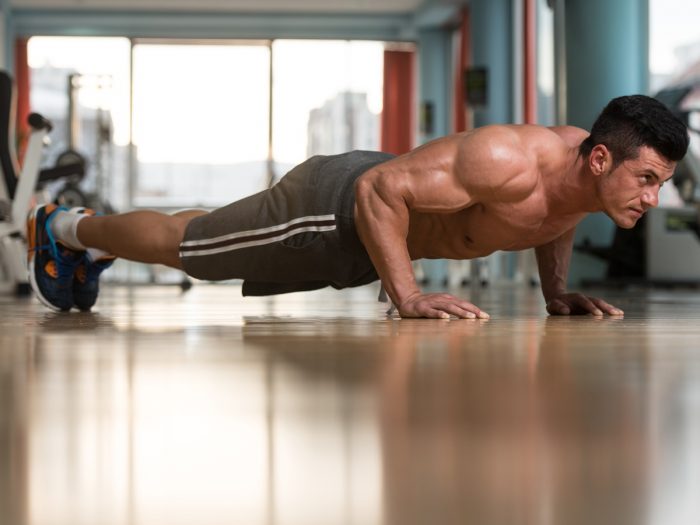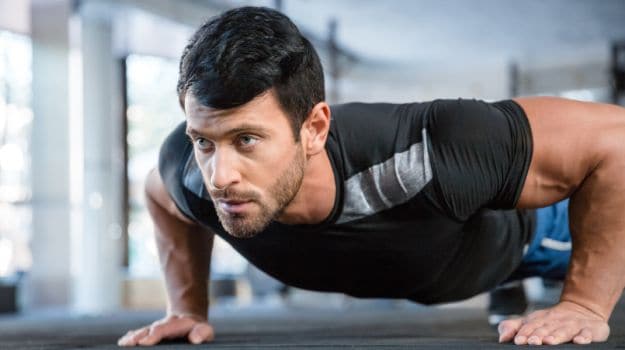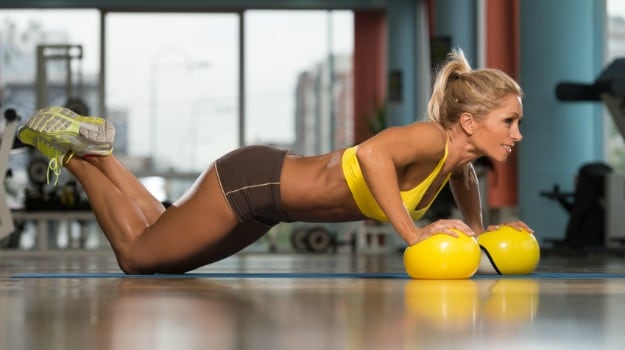Push-ups are one of the most recognizable exercises. Look around any gym, and you’re sure to see at least a few people doing some variation of push-ups. They’re used in sports and athletic training and by the military to get new recruits in shape. They’re also combined with other tests to measure a person’s level of fitness.
Push-ups require no equipment and are the perfect bodyweight exercise to do when you don’t have access to a gym. Just drop to the ground and belt them out, using different variations to target specific muscle groups or make it more or less challenging. There’s no doubt that push-ups are an “exercise classic.” Here are some interesting facts about push-ups you may not be aware of.
Benefits of Push-ups
Push-ups have a huge range of benefits, including positive effects on your core, deltoids, pectorals, triceps, forearms, biceps and your calorie-burning, among others.
Core Strength
Push-ups are excellent for shaping the abdominal muscles and improving muscles of the lower back, which will increase support and balance in your body. [2]
Deltoids
Your deltoids are attached at the front, side, and rear of your shoulders, and are important supplemental muscles to the performance of a push-up. [3] More deltoid strength can increase flexibility and strength in your upper arms.
Pectorals
If you want to build your chest muscles, nothing is better than push-ups, as the chest muscles do most of the work in this exercise. [4] This helps women and can elevate their bust and counter the strain of their breasts on chest muscles.
Triceps, Biceps, & Forearms
Three different arm muscles are engaged in push-ups, and while they are not directly targetedwith this exercise, they can still reap the benefits of increased strength. [5]
Calorie Burning
Push-ups burn a lot of calories because you are engaging multiple muscle groups at the same time. [6] Studies have found that by engaging more muscle groups simultaneously, your fat and calorie-burning can increase significantly.

1. It's a Good Full Body Workout - By working on a large number of muscles in your body, push-ups help tremendously for a fitter you. Push-ups help you focus on your arms, abs and your lower body, all at the same time. They train your muscles to work together and become stronger.

2. Helps Create Balance and Stability - According to David Nordmark, author of the book Pushups for Everyone: Perfect Pushup Workout for Muscle Growth, Strength & Endurance, "push-ups help improve your reaction time by helping to train your proprioceptive muscle fibers. These fibers are microscopic nerves that keep your body balanced. When you attempt a push-up these nerves are firing constantly in an effort to keep your body from tipping over. This trains them to respond more quickly to stimulation which aids your balance and speed."

3. Helps Build Muscle Density - With age, you start to lose muscle density which alters the way in which your body uses and burns energy. One of the things exercise intends to do is maintain if not improve muscle density. This does not mean that you'll see results with a few push-ups. An article on the website Fitness Black & White outlines the ideal number of push-ups you need to do to build muscle mass in different parts of your body.
1. Chest, Shoulders and Triceps - 4 sets of 12-15 reps
2. Back and Biceps - 4 sets of 12-15 reps
3. Legs and Abs - 4 sets of 12-15 reps

Advantages of push ups: With age, you start to lose muscle density which alters the way
4. Upper Body Definition - Push-ups have sometimes been labeled as the one of the most suitable upper body workouts and for good reason. According to LaReine Chabut, "When you do a push-up, you recruit your core muscles to help keep your back straight and assist you in pulling your belly button toward your spine." They sculpt not just your arms but your chest, back and shoulders.
5. A Strong Core - If you're looking for washboard abs and a strong core, then push-ups might just be the perfect starting point. By core, we mean the abdominal section, waist, side of the waist and everything right down to the pelvis. Strong core muscles allow you to do physical activities with ease, help with back problems and maintain good posture

2. Helps Create Balance and Stability - According to David Nordmark, author of the book Pushups for Everyone: Perfect Pushup Workout for Muscle Growth, Strength & Endurance, "push-ups help improve your reaction time by helping to train your proprioceptive muscle fibers. These fibers are microscopic nerves that keep your body balanced. When you attempt a push-up these nerves are firing constantly in an effort to keep your body from tipping over. This trains them to respond more quickly to stimulation which aids your balance and speed."

3. Helps Build Muscle Density - With age, you start to lose muscle density which alters the way in which your body uses and burns energy. One of the things exercise intends to do is maintain if not improve muscle density. This does not mean that you'll see results with a few push-ups. An article on the website Fitness Black & White outlines the ideal number of push-ups you need to do to build muscle mass in different parts of your body.

4. Upper Body Definition - Push-ups have sometimes been labeled as the one of the most suitable upper body workouts and for good reason. According to LaReine Chabut, "When you do a push-up, you recruit your core muscles to help keep your back straight and assist you in pulling your belly button toward your spine." They sculpt not just your arms but your chest, back and shoulders.
5. A Strong Core - If you're looking for washboard abs and a strong core, then push-ups might just be the perfect starting point. By core, we mean the abdominal section, waist, side of the waist and everything right down to the pelvis. Strong core muscles allow you to do physical activities with ease, help with back problems and maintain good posture
No comments:
Post a Comment